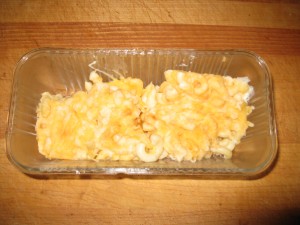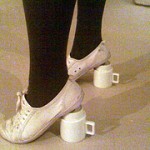 Fatty comfort foods have been getting a bad rap lately, particularly in health and dieting circles. We drift toward brownies, pasta alfredo, cheesecake, or chocolate when sad or stressed. I encountered a friend, draped with whiny kids, in the grocery store one day. She pointed wryly to her cart: chocolate ice cream, whipped cream, chocolate syrup. “Guess what kind of day I’ve had?” she quipped.
Fatty comfort foods have been getting a bad rap lately, particularly in health and dieting circles. We drift toward brownies, pasta alfredo, cheesecake, or chocolate when sad or stressed. I encountered a friend, draped with whiny kids, in the grocery store one day. She pointed wryly to her cart: chocolate ice cream, whipped cream, chocolate syrup. “Guess what kind of day I’ve had?” she quipped.
Even while we find ourselves snarfing down these ‘shameful’ treats to feel better, we are likely chastising ourselves. The assumption (with psychology once again the guilty party) is that our craving for these foods is anchored solidly in learned behavior. As a child, Mommy offered you cookies or mac and cheese when you were sad, to cheer and comfort you. You learned to associate feeling better with these treats. If this is the underlying mechanism, we think, in rushes guilt or shame for not being able to resist this remedy when we are sad. Especially if weight issues are a struggle. We think we should know better and make healthier choices to boost mood–like exercise or talking to a friend.
New research from Belgium (where some of the world’s best chocolate, waffles, and french fries originate–how fitting!) has scientifically removed that guilt. As the headline reads, “fatty comfort foods really do comfort.” Study participants watched slides of sad faces while listening to emotional music. At the same time, they received infusions of either saline solution or fatty acids (such as ooze from the foods named above.) Functional MRI scans were taken of the participants’ brains at the same time, zeroing in on the parts of the brain that respond to emotion. The brains of the subjects who received fatty acids were much less reactive to the sad stimuli than the brains of the subjects who only got saline. Just one more piece of data about how mind-body interactions move in both directions! Not only can feelings make us crave certain foods, but certain foods can soothe our brains.
Drat, of course, that calories still count. And there are healthier (though certainly not tastier) ways to assuage sadness than dessert. I’m not recommending binges of hot fudge sundaes; everything in moderation. But I’m going to practice self-compassion and not feel guilty next time I have an urge for a Krispy Kreme (just one, not a whole box) on a really rotten day.









